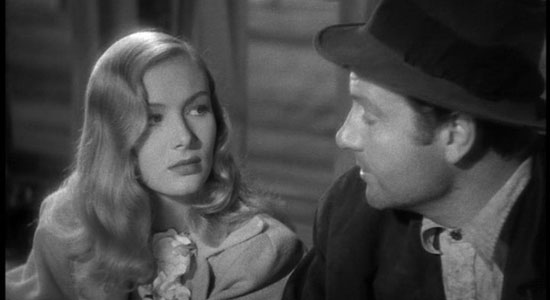MAGNET contributing editor Jud Cost is sharing some of the wealth of classic films he’s been lucky enough to see over the past 40 years. Trolling the backwaters of cinema, he has worked up a list of more than 100 titles—from the ’30s through the ’70s—that you may have missed. A new selection, all currently available on DVD, appears every Friday.

Sullivan’s Travels (1941, 90 minutes)
Surrounded by the gathering gloom of an imminent World War II mingled with the toxic residue of the Great Depression, red-hot film director John L. Sullivan (Joel McCrea)—”the caliph of comedy” whose recent box-office smashes include “laff riots” like Ants In Your Plants—has had it up to here with the lightweight stuff he’s been cranking out. “How can you talk about doing musicals when the whole world is contemplating suicide?” he rails at a nervous group of producers and studio moguls. “Corpses are piling up in streets with grim death gargling at you from every corner.”
His next picture, O Brother, Where Art Thou?, will be “a serious commentary on the conditions that confront the common man,” Sullivan insists. It’s the perfect set-up for the finest work of brilliant director/screenwriter Preston Sturges.
To get background for his epic, Sullivan dons “old clothes” from his studio’s wardrobe and sets off into the real world with only one thin dime in his pocket. “And I’m not coming back until I find out what trouble is!” he tells the suits, already contemplating shadowing their meal ticket with a “land-yacht monstrosity,” a fully-staffed bus with kitchen, bed and bath facilities. Before he departs, Sullivan’s valet (Eric Blore) warns him, “Poverty is not about the absence of riches. It’s a plague, virulent in itself, as contagious as cholera, full of filth, criminality and despair.”
Sullivan strikes gold immediately by wandering into an owl wagon, an all-night diner, where “the girl,” a down-on-her-luck Veronica Lake, treats him to a 35-cent plate of ham and eggs. Only 19 at the time, the ravishing Lake—with her trademark “peekaboo” hairstyle—asks to accompany Sullivan on his journey once he confesses he’s not just the average working stiff. “I know 50 times as much about trouble as you ever will. Take me with you,” she says in the sultry manner that would serve as the prototype for Lauren Bacall’s 1944 film debut with Humphrey Bogart in To Have And Have Not.
With Lake’s platinum locks tucked under a floppy cloth cap, the pair drives Sullivan’s limo to a likely spot where desperate men might hop the next freight train. “Let’s just sit here and feel like a couple of tramps,” says Sullivan, breathing hard after clambering onto a boxcar with all the aplomb of Stan Laurel and Oliver Hardy.
After soaking up the poverty experience, Sullivan and the girl triumphantly return to Hollywood. A naive Sullivan decides to hand out $5 bills one night to thank the homeless. One of the tramps steals all his cash and drags his unconscious body into a boxcar headed towards the Deep South. When he awakens without a safety net, John L. Sullivan will discover what being poor is really all about.






